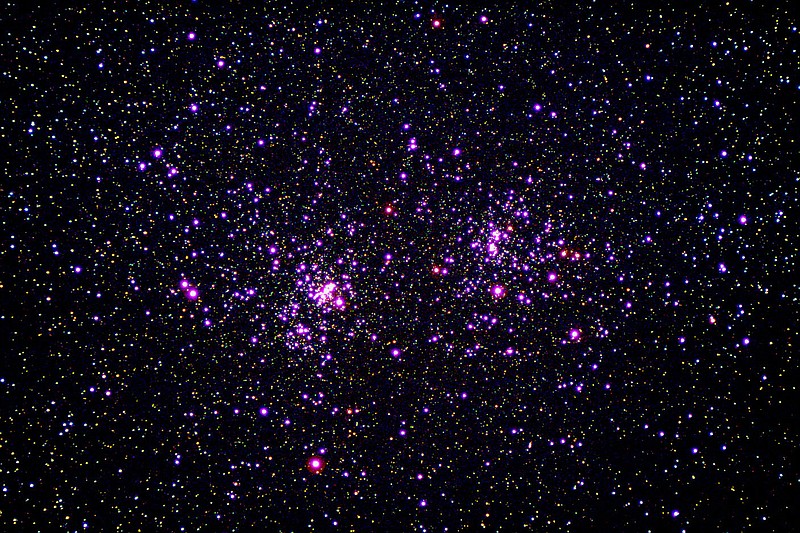Winter is upon us. To an amateur astronomer, this means that the winter constellations are rapidly appearing and the night sky will look very different in winter than it does in summer.
Jupiter and Saturn, as well as Venus, are still easily visible across the southern to the southwestern night sky. Jupiter and Saturn line up across the Plane of the Ecliptic, an imaginary line drawn through the night sky which is the line through which the outer planets move as they move around the Sun.
While in the summer the Milky Way regions of the sky are rich in nebulas that shine by stimulated hydrogen, the winter sky is full of regions where stars have formed into open clusters that once glowed a distinct red color from excited hydrogen.
These open clusters can be very interesting and beautiful, especially if you use good binoculars to spy on them. One such cluster is actually a double -- the Double Cluster in Perseus. The Double Cluster in Perseus was once a huge cloud of hydrogen gas that glowed from a few new, hot stars contained within it. Over a long period of time, this gas condensed into two clusters of hot, young stars that form a beautiful formation in the winter night sky.
During December, this double cluster becomes more and more easily visible as winter comes on. Find the constellation Cassiopeia. Cassiopeia will look like a W in the night sky and it will be to the left of Polaris, the North Star. Find the bottom star of Cassiopeia and move your binoculars slowly to the right, looking for two hazy spots close by one another.
If you find these spots, they can look like two handfuls of jewels, scattered in two little piles in the night sky, close together. It takes dark skies and a low northern horizon to see these two clusters at their best.
I have included an image I made of these two clusters some years ago. In the image itself, I can see a few yellow stars, not part of the Double Cluster, interspersed in front of the bright, bluish stars of the cluster. See how these two clusters look to you in your own binoculars!
Challenge: Look at the picture I have included in this column. On the portion of the cluster located to the right, connect the star dots and see if you can find the little poodle, standing on her back legs -- with a little tail coming off the cluster further to the right.
Each season presents its own celestial wonders. True, you often have to put on layers of bulky winter clothes to view the night sky in this season, but I think it is worth it. And, you usually don't have to deal with those awful chiggers and mosquitoes!
David Cater is a former faculty member of JBU. Email him at [email protected]. Opinions expressed are those of the author.

